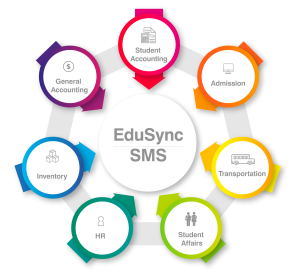
How Software Systems Simplify School Student Accounting
School Student Accounting faces a constant battle in managing the financial lifecycle of students. This process, encompassing tuition invoicing, fee collection, discount application, and regulatory compliance, is complex, error-prone, and manually intensive when reliant on traditional methods. For any institution aiming for financial transparency and operational efficiency, managing this process, known as School Student Accounting, is arguably the most crucial administrative challenge.
The reality is that students are the primary source of school revenue, and tracking their fees, payments, and balances requires specialized tools far beyond generic accounting software. Errors in this area can directly impact cash flow, skew financial reporting, and lead to frustrating disputes with parents.
This guide is tailored specifically for administrators who recognize that efficiency in School Student Accounting is the key to unlocking broader school system management success. We will explore how modern, integrated educational management software transforms this administrative burden. We will demonstrate how a seamless link between the finance department and the Student Management System simplifies daily operations, enhances compliance, and frees up valuable staff time, enabling you to focus on the educational mission and strategic investments, such as smart learning tools.
From Chaos to Clarity: Automating Tuition and Fees in School Student Accounting
The manual processes surrounding tuition and fee collection are the single largest source of friction in School Student Accounting. Administrators often spend countless hours generating individual invoices, chasing late payments, and manually matching incoming bank deposits to student ledgers. Modern software systems eliminate this chaos through sophisticated automation.
1. Automated and Personalized Invoicing
The core feature of simplifying School Student Accounting is the ability to generate accurate, personalized invoices without human intervention. The system should automatically pull relevant data points from the student’s profile, enrollment status, grade level, chosen courses, and extracurricular activities to calculate fees instantly.
- Custom Fee Structures: The software must handle complex fee structures, including term fees, annual fees, sibling discounts, scholarship awards, and payment plans (e.g., monthly, quarterly). The ability to instantly apply these personalized variables based on student data ensures that every invoice is correct the first time, significantly reducing parent queries and administrative back-and-forth.
- Scheduled Billing: Administrators should be able to set up billing schedules for the entire academic year in advance. The system then automatically issues invoices via email or a secure parent portal on the due dates, adhering to the school’s school system management protocols.
2. Streamlined Payment Gateway Integration
A critical bottleneck is the reconciliation of incoming payments. Specialized educational management software connects directly to online payment gateways (credit cards, bank transfers, e-wallets).
- Instant Reconciliation: As soon as a payment is made online, the School Student Accounting system automatically records the payment, matches it to the correct student ledger, and updates the General Ledger balance. This eliminates the need for the finance team to manually sift through bank statements and match transactions, a process that can take days.
- Multi-Channel Support: The system should support various payment options, including online portal payments, cashier terminal input, and direct debit authorization, ensuring convenience for parents and speed for the administration.
3. Automated Follow-up and Collections
Chasing overdue fees is tedious and time-consuming. Modern solutions automate this sensitive process:
- Dynamic Reminders: Set up tiered, polite, automated reminder emails or SMS messages that trigger when an account becomes overdue (e.g., a reminder 5 days before the deadline, and a firmer notice 3 days after).
- Balance Visibility: Providing parents with a secure, real-time view of their current outstanding balance via the parent portal significantly improves accountability and payment timeliness, further simplifying School Student Accounting duties.
By leveraging these automation features, administrators transform the student accounting function from a reactive collection effort into a proactive, efficient financial operation, greatly enhancing cash flow predictability.
The Power of One: Integrating School Student Accounting with Your School Management System
In the past, finance and student administration operated in silos, requiring duplicate data entry and leading to disastrous reconciliation errors. Modern school management software solves this by positioning School Student Accounting as an integrated module within a comprehensive Education ERP. This concept of “The Power of One” refers to having a single, unified source of data truth.
1. Eliminating Dual Data Entry with Student Management System ERP
The key to simplification is the seamless, bilateral flow of information between the financial module and the School Management System.
- Enrollment Triggers Billing: When a student’s enrollment status is updated (e.g., from “Applied” to “Enrolled”) in the SMS, the accounting system is instantly notified and automatically prepares the initial invoice structure.
- Attendance and Activity Billing: Fees for optional items (e.g., field trips, late-pickup fees, specific club activities) should be tracked by the administrative or attendance module and pushed immediately to the student’s financial ledger. This ensures that the financial record always reflects the administrative reality, streamlining school system management operations.
2. Unified Reporting and Analytics
When student data and financial data reside in separate systems, reporting is unreliable and slow. Integration allows administrators to generate powerful, cross-functional reports in real-time.
- Enrollment-to-Revenue Analysis: Instantly analyze revenue projections based on current enrollment figures and compare them against actual fees collected and outstanding balances. This is critical for forecasting and budget alignment.
- Financial Impact of Strategic Decisions: Administrators can quickly model the financial impact of policy changes by seeing real-time effects within the System.
3. Comprehensive Budgeting Supported by Student Data
A unified system allows budget allocation to be driven by student activity and needs, not just historical spending. For instance, the actual cost and utilization of resources like smart learning tools can be precisely allocated to the students or departments using them, providing true cost-per-student metrics. This level of granular detail, impossible with separate systems, empowers administrators to make smarter, data-driven decisions about resource spending and strategic development.
This deep, cross-module integration is the hallmark of sophisticated educational management software.
Minimizing Risk: Ensuring Financial Compliance and Audit Readiness in School Student Accounting
For school administrators, the pressure of maintaining compliance and preparing for audits is constant. Simplified School Student Accounting software minimizes risk by building compliance directly into its functionality.
1. Robust Audit Trail and Security
Financial compliance begins with irrefutable accountability. The integrated system must automatically log every financial action related to a student account.
- Immutable Transaction Logs: Any change to a student’s invoice, fee structure, or payment must be logged with a timestamp and user ID. This immutable audit trail is the first line of defense during a financial review, proving that the school adheres to its financial policies.
- Data Security: Given the sensitivity of financial and student data, the school management software must comply with relevant data privacy laws (e.g., FERPA, GDPR). Secure, cloud-based environments offer better protection than local servers or shared network drives.
2. Accurate Tax and Regulatory Reporting
Depending on the jurisdiction and the school’s non-profit status, specific financial forms (e.g., tax receipts, tuition statements) are mandatory.
- Automated Receipt Generation: The system should automatically generate and distribute official tax-compliant receipts and year-end statements to parents with required financial details, eliminating a major annual burden for the administrative staff.
- Fund Allocation Traceability: If the school receives restricted funds (grants or donations specifically for technology, or smart learning tools), the School Student Accounting module must be able to trace student payments and expenses to ensure that all financial activities comply with the grant restrictions. This is a critical feature of specialized educational management software.
3. Enforcing Internal Controls and Segregation of Duties
To prevent internal fraud and errors, the software must enforce clear boundaries. For example, the person responsible for posting payments should not be the same person authorized to issue refunds or write off bad debt. Role-based security within the system ensures:
- Granular Permissions: Administrators can define exact permissions for specific tasks related to School Student Accounting, ensuring that financial controls are enforced electronically, strengthening the overall school system management environment.
Beyond Transactions: How Software Enables Strategic School Student Accounting
While simplification of day-to-day operations is a huge win, the long-term strategic advantage of modern School Student Accounting software lies in its ability to support high-level decision-making. Administrators can move beyond tracking money to strategically managing institutional growth and resource allocation.
1. Enhanced Cash Flow Forecasting
Predicting the school’s liquidity is essential. Integrated systems provide real-time dashboards that offer immediate insight into cash flow.
- Real-Time Receivables: View all outstanding student balances, categorized by due date. This immediate visibility allows administrators to plan expenditures and capital investments with greater confidence.
- Scenario Planning: Easily model the impact of tuition increases, enrollment changes, or shifts in payment plans on future cash flow, allowing for proactive adjustments in administrative policy.
2. Better Resource Allocation for Educational Initiatives
Strategic school system management involves aligning resources with educational goals. The ability of the School Student Accounting system to track income and expenses at a granular level supports this alignment.
- Program Costing: Determine the true cost of running specific programs (e.g., special education, sports, advanced placement courses). This enables administrators to make informed decisions about pricing, staffing, and funding.
- ROI on Technology: By linking expenditures on smart learning tools (hardware, software licenses) to specific student cohorts, the school can accurately assess the return on investment for technology initiatives, ensuring funds are spent where they yield the greatest educational benefit. This capability elevates the School Student Accounting function from operational support to strategic partnership.
3. Improved Parent Communication and Satisfaction
Simplification extends outward to the parent community. Transparent, easy-to-use educational management software improves overall satisfaction.
- Parent Portal Transparency: Providing parents with 24/7 access to their real-time, accurate financial ledger, payment history, and tax documents reduces calls to the finance office and builds trust.
- Professionalism: Automated, branded communication regarding fees reinforces the school’s professional image as a well-managed institution.
The Integrated Solution: EduSync SMS
We have stressed that the ideal platform for School Student Accounting must be integrated, secure, and unified. EduSync SMS from Syncology emerges as the definitive solution, designed from the ground up to serve as the singular software backbone for modern institutions. More than just a school management software, EduSync SMS centralizes all operational data, eliminating the need for fragmented, siloed applications that constantly require manual reconciliation.
Its integrated General Accounting module works in real-time with the built-in School Management System capabilities, ensuring absolute accuracy from admission through to payment reconciliation. Features like automated fee collection, installment scheduling, and instant general ledger reports streamline the complexities inherent in School Student Accounting. Furthermore, its comprehensive modules, including HR & Payroll, Inventory, and Transport Management, create a complete school system management workflow. This single source of truth provides the robust financial visibility needed for strategic resource allocation, directly supporting critical investments in initiatives like smart learning tools. By choosing this educational management software, you achieve the gold standard for school management software: a platform that doesn’t just manage the books, but empowers smarter, faster, and more efficient school-wide operations. Book Your Free Demo
Summary
This Blog Post addresses the significant challenges faced by school administrators in manually managing School Student Accounting (from tuition invoicing to collection and reconciliation). It asserts that the solution lies in adopting specialized educational management software that provides full automation. The simplification hinges on the “Power of One” concept, where the School Student Accounting system seamlessly integrates with the Student Management System (SMS/ERP), eliminating data duplication and accelerating fee collection through automation and instant payment gateway reconciliation. Furthermore, the article emphasizes that these systems minimize risk by providing a robust audit trail, enforcing segregation of duties, and ensuring financial compliance. It concludes by noting that an integrated platform like EduSync SMS offers these features to transform School Student Accounting into a strategic function that supports resource allocation for initiatives such as smart learning tools.





